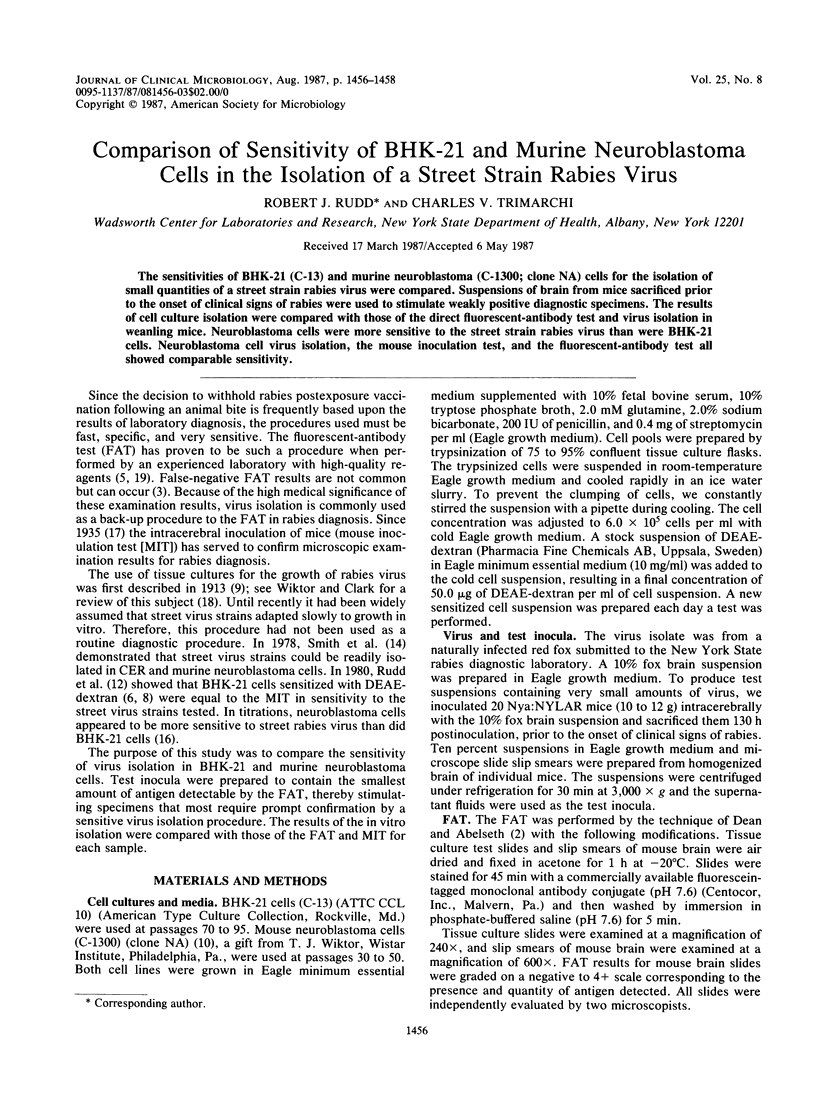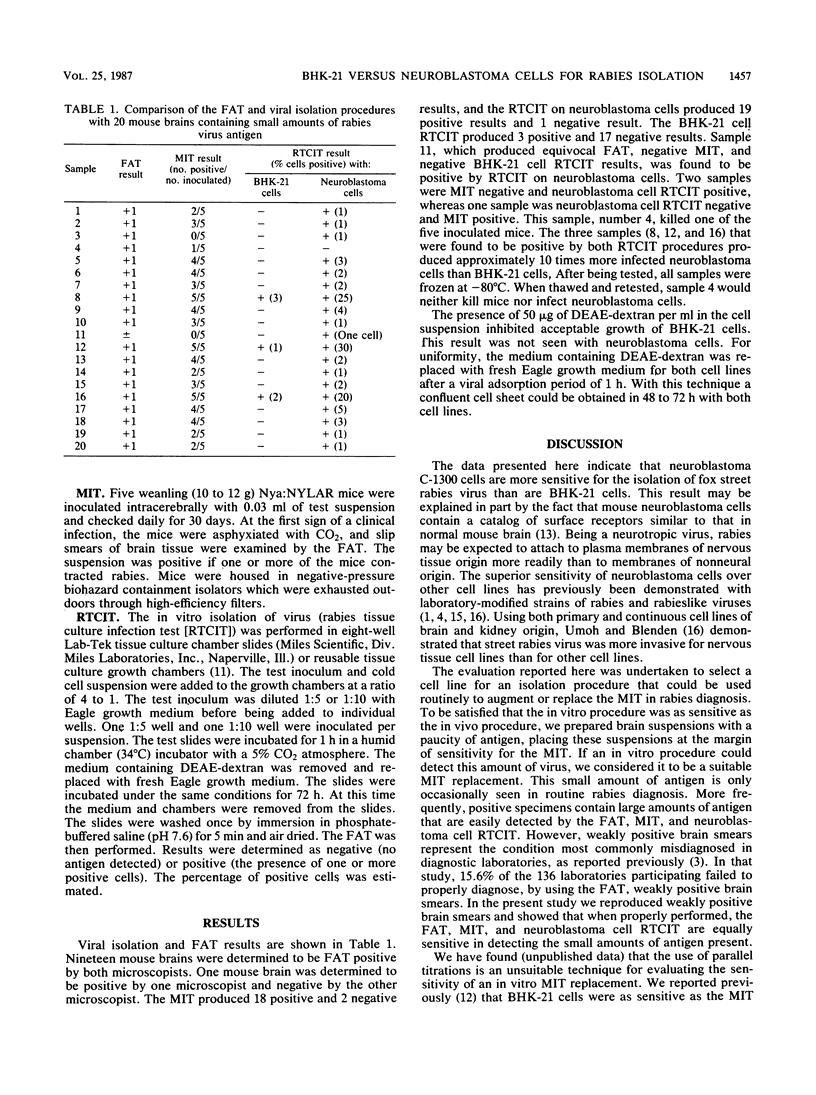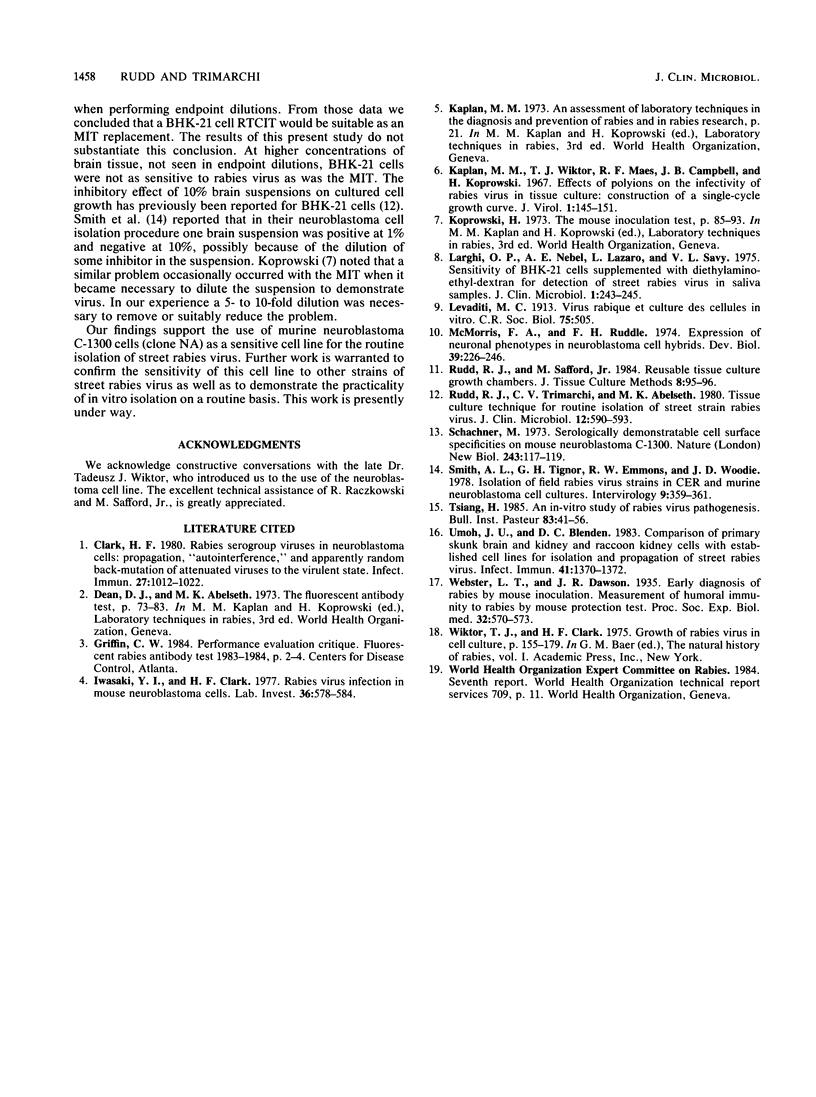Abstract
The sensitivities of BHK-21 (C-13) and murine neuroblastoma (C-1300; clone NA) cells for the isolation of small quantities of a street strain rabies virus were compared. Suspensions of brain from mice sacrificed prior to the onset of clinical signs of rabies were used to stimulate weakly positive diagnostic specimens. The results of cell culture isolation were compared with those of the direct fluorescent-antibody test and virus isolation in weanling mice. Neuroblastoma cells were more sensitive to the street strain rabies virus than were BHK-21 cells. Neuroblastoma cell virus isolation, the mouse inoculation test, and the fluorescent-antibody test all showed comparable sensitivity.
Full text
PDF


Selected References
These references are in PubMed. This may not be the complete list of references from this article.
- Clark H. F. Rabies serogroup viruses in neuroblastoma cells: propagation, "autointerference," and apparently random back-mutation of attenuated viruses to the virulent state. Infect Immun. 1980 Mar;27(3):1012–1022. doi: 10.1128/iai.27.3.1012-1022.1980. [DOI] [PMC free article] [PubMed] [Google Scholar]
- Iwasaki Y., Clark H. F. Rabies virus infection in mouse neuroblastoma cells. Lab Invest. 1977 Jun;36(6):578–574. [PubMed] [Google Scholar]
- Kaplan M. M., Wiktor T. J., Maes R. F., Campbell J. B., Koprowski H. Effect of polyions on the infectivity of rabies virus in tissue culture: construction of a single-cycle growth curve. J Virol. 1967 Feb;1(1):145–151. doi: 10.1128/jvi.1.1.145-151.1967. [DOI] [PMC free article] [PubMed] [Google Scholar]
- Koprowski H. Laboratory techniques in rabies: the mouse inoculation test. Monogr Ser World Health Organ. 1973;(23):85–93. [PubMed] [Google Scholar]
- Larghi O. P., Nebel A. E., Lazaro L., Savy V. L. Sensitivity of bhk-21 cells supplemented with diethylaminoethyl-dextran for detection of street rabies virus in saliva samples. J Clin Microbiol. 1975 Mar;1(3):243–245. doi: 10.1128/jcm.1.3.243-245.1975. [DOI] [PMC free article] [PubMed] [Google Scholar]
- McMorris F. A., Ruddle F. H. Expression of neuronal phenotypes in neuroblastoma cell hybrids. Dev Biol. 1974 Aug;39(2):226–246. doi: 10.1016/0012-1606(74)90237-1. [DOI] [PubMed] [Google Scholar]
- Rudd R. J., Trimarchi C. V., Abelseth M. K. Tissue culture technique for routine isolation of street strain rabies virus. J Clin Microbiol. 1980 Oct;12(4):590–593. doi: 10.1128/jcm.12.4.590-593.1980. [DOI] [PMC free article] [PubMed] [Google Scholar]
- Schachner M. Serologically demonstrable cell surface specificities on mouse neuroblastoma C1300. Nat New Biol. 1973 May 23;243(125):117–119. [PubMed] [Google Scholar]
- Smith A. L., Tignor G. H., Emmons R. W., Woodie J. D. Isolation of field rabies virus strains in CER and murine neuroblastoma cell cultures. Intervirology. 1978;9(6):359–361. doi: 10.1159/000148958. [DOI] [PubMed] [Google Scholar]
- Umoh J. U., Blenden D. C. Comparison of primary skunk brain and kidney and raccoon kidney cells with established cell lines for isolation and propagation of street rabies virus. Infect Immun. 1983 Sep;41(3):1370–1372. doi: 10.1128/iai.41.3.1370-1372.1983. [DOI] [PMC free article] [PubMed] [Google Scholar]


